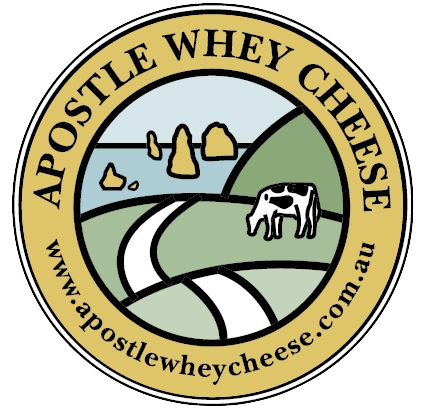Dairy Life | Part 3
Welcome to the third instalment in our Dairy Life series, which follows the life of one of our dairy heifer calves, right through to her becoming a working milker.
This Dairy Life series aims to help our customers, and other people who aren’t farmers, better understand the intricacies of environmentally sustainable dairy production. It is a way of life that we love, but it’s also a highly demanding job that requires a good education, lots of training, extensive experience and the ability to understand and apply complex aspects of animal and agricultural science.
So please enjoy Part 3 and feel free to ask questions, make comments and interact with each other through the comments section of this blog.
Briney is now almost six weeks old and so far she’s doing everything right in her journey to become a milker in our herd at Apostle Whey Cheese.
She spends a lot of her time with her mates in our calf shed. She’s in a large pen with four other calves that were born around the same time. At the moment we have 35 calves under cover – all in pens of about five.
Briney is continuing to receive approximately five litres of milk every day and this will continue until she is at least 10 weeks old. The milk all the calves are fed has been milked from mothers who calved in the past week. As discussed in Part 2, this milk is still very rich and can’t go into our vat for cheese making or collection for at least one week after calving.
You might be wondering how there is enough of this milk to feed all the calves. It is important to note that our bull calves are sold before they are a week old – mostly for the veal market. This Dairy Life series is about sharing all of what we do and we don’t shy away from the reality that bull calves have almost no value to a dairy farm.
Having said that, next year we will be leasing some Angus (beef breed) bulls to run over our maiden heifers (first time mums). Normally, maiden calvings don’t end up in the herd – we wait for a cow’s second, third and fourth calves to rear for the dairy herd.
So, by crossing our maiden heifers with Angus bulls, those calves will be half beef bred which means they will be much more valuable when they go to market. Buyers will likely buy them and grow them out for the meat industry.
At six weeks, Briney now spends time outside in pastured paddocks (pictured) and she has begun to pick at the grass, which is important. Her gut relies on natural bacteria, protozoa, yeast and fungi found naturally in the paddocks to breakdown the food she ingests.
There are four different compartments in a calf stomach and as Briney’s diet changes each compartment changes. For example her milk compartment will shrink and her main stomach, the rumen, will grow and develop.
She also has a special calf grain mix to eat while in her pen, in addition to straw and plenty of water. So there is a constant nutritional shift occurring at the moment. She’s gone from a diet of milk only, to milk, grain, straw, water and grass.
By the time she is weaned off milk in another month or so, Briney will be eating about 1kg of grain everyday in addition to all the grass and fodder she likes.
By stopping the horns from developing we can avoid tissue damage and it’s a pretty simple process when the calves are young.
Now is a really important time for farmers to monitor their calves. Dirty tails is the obvious sign that they are struggling to adjust to the changes in their diet and the introduction of natural pathogens. It’s not uncommon for a few calves to develop scours and in some cases we may need assistance from a veterinarian to return a calf to health.
Another good indicator of their health is their coat. Farmers get to know what a healthy coat looks like. Sometimes, the condition of the coat or a change in its colour can indicate things like a copper deficiency.
Briney was recently disbudded, which is the removal of the horn buds. It is animal instinct to fight each other and cattle with horns can damage both themselves and others.
By stopping the horns from developing we can avoid tissue damage and it’s a pretty simple process when the calves are young. They are placed in a calf crush and a hot iron is held against the end of the horn buds for about 10 seconds to stop it growing.
We are committed to raising a healthy calf that will be an asset to our dairy farm for years to come. This process includes two injections, one month apart, to vaccinate Briney against things like pulpy kidney, tetanus, oedema and leptospirosis. She’ll also receive a separate vaccine against Bovine Johne’s disease and will be drenched to make sure there are no parasites or worms impacting her optimal growth rate and health.
And so that’s where we leave Briney’s story for another four weeks. We’ll be back when she is weaned and leaves the calf shed for life in our grassy paddocks.


